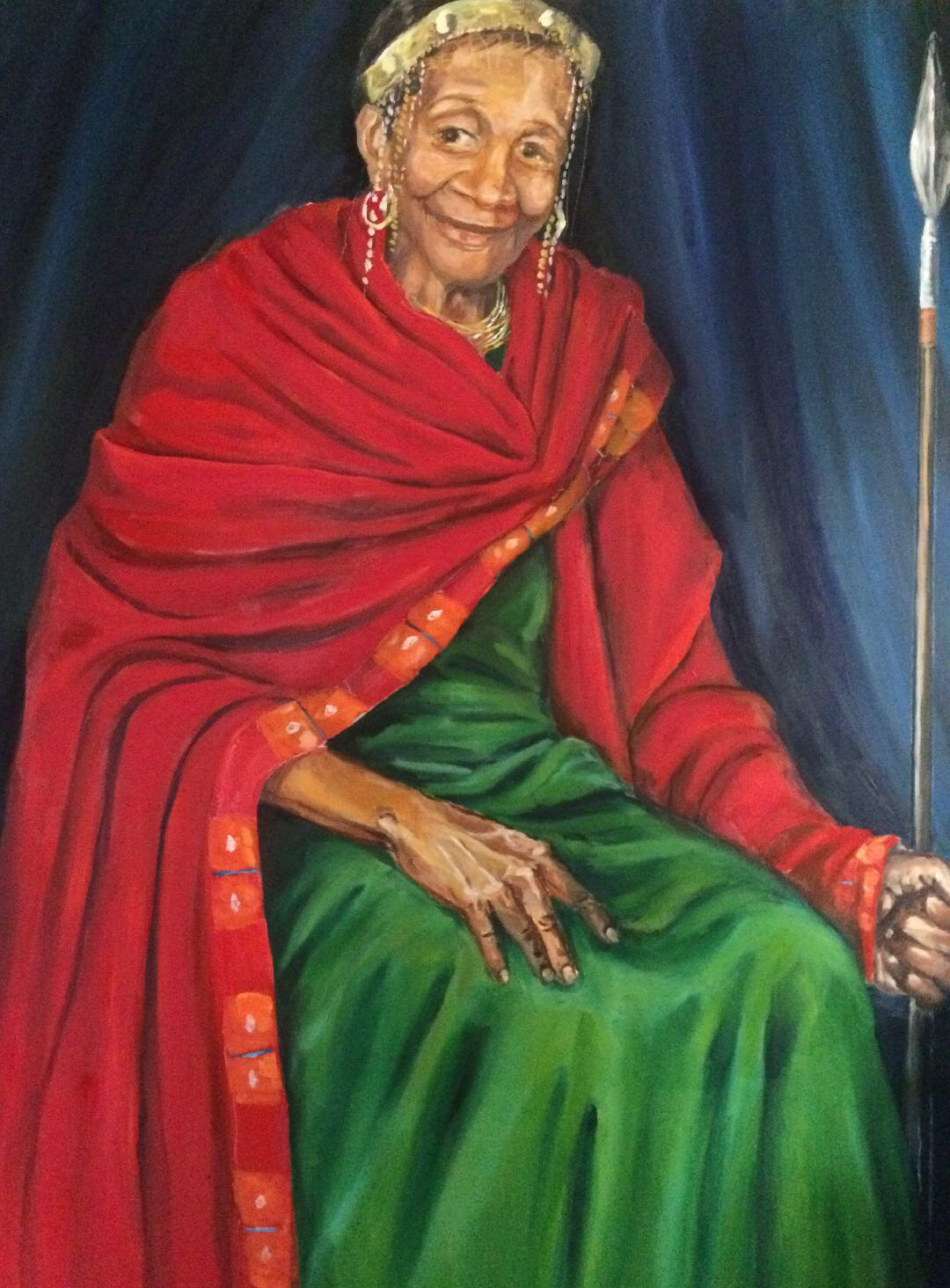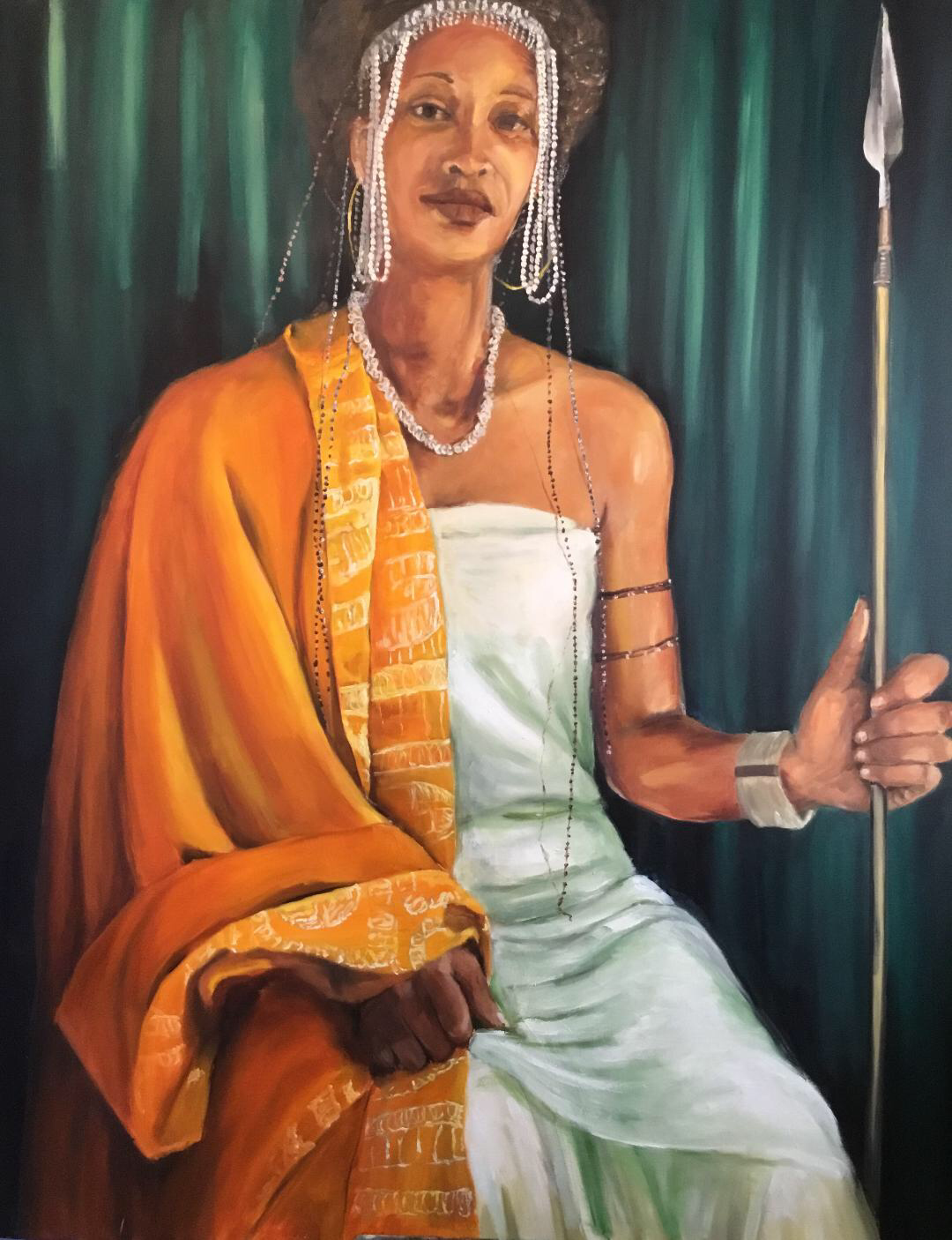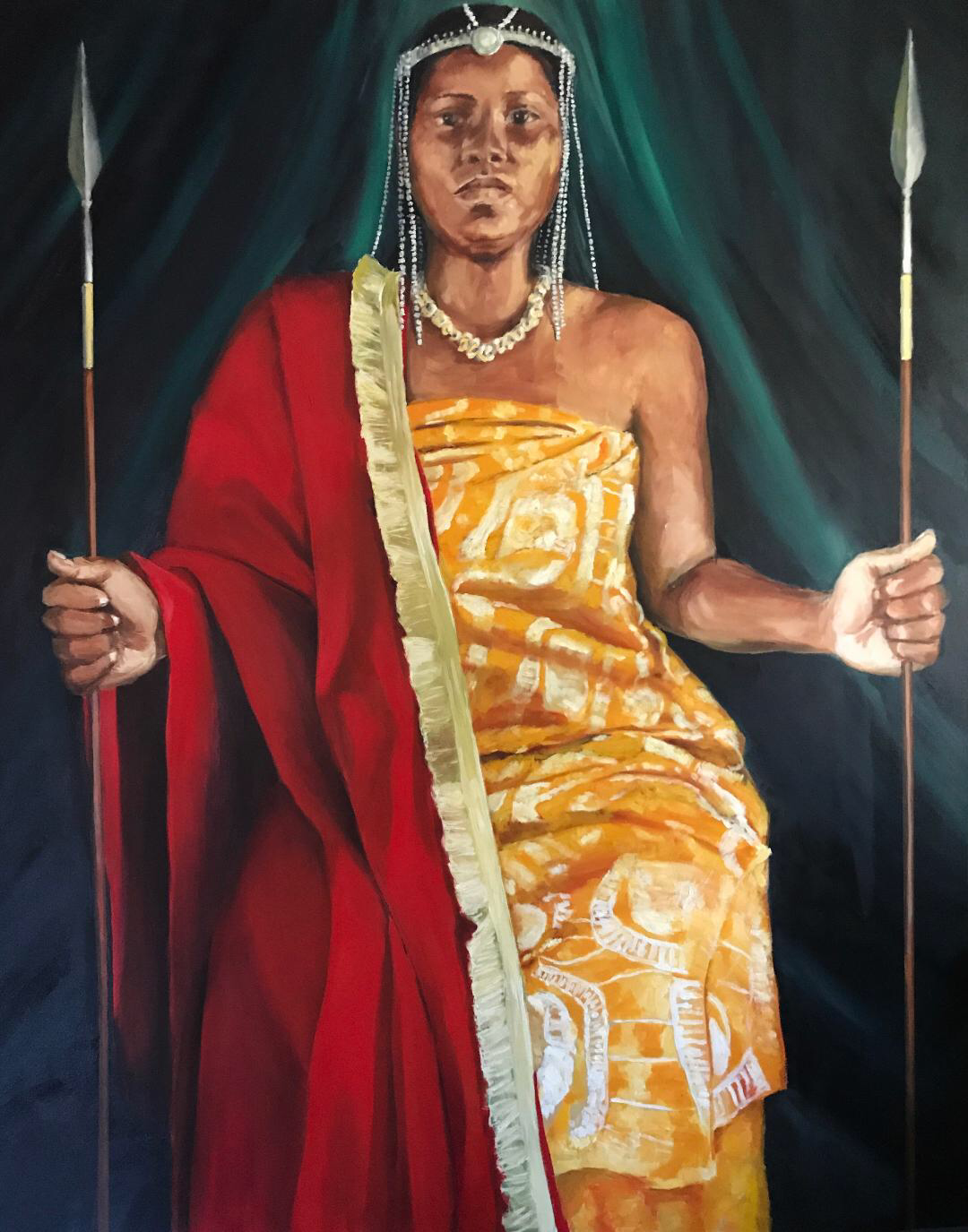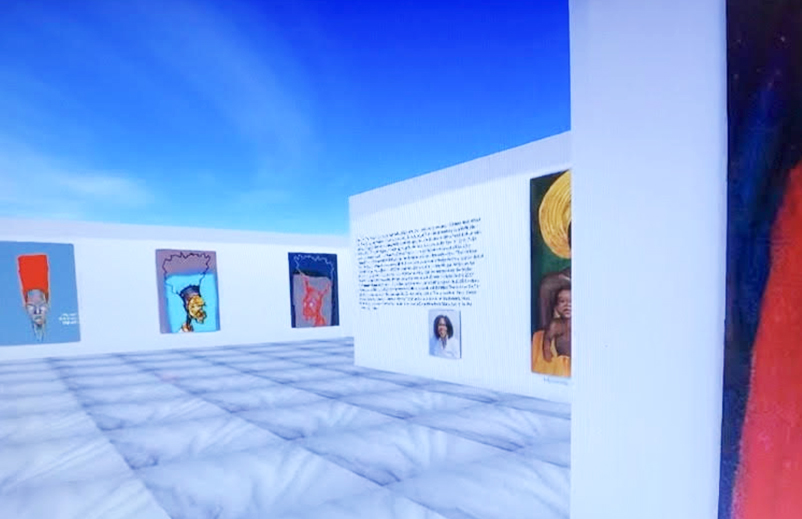

ABOVE: The virtual exhibition space of Black Before I Was Born.
︎ Black Before I Was Born, Louisville
Black Before I Was Born
Review
Brittany J. Thurman
I am Black before I am a woman.
I am Black before I am a writer.
I was Black before I was born.
Each aspect of my identity takes root in those five letters. Each is preceded with a capital B. From the complexion of my skin, to the texture of my hair, to the history of being Black in America and always the knowledge that my DNA was first formed on African soil.
I am free to choose much of my identity for myself. This morning, my style was a casual t-shirt and jeans. A year ago, my diet bordered pescatarian. I choose the pronouns she/her. What I did not choose is the entity that encompasses all of me. Black.
The capital B in Black is a proclamation. It is a hallelujah shout. Grandmomma’s hug. You do not choose Black. Black and all that it encompasses chooses you. I am honored to have been selected to walk in this skin.
A virtual exhibition curated by Ashley Cathey, Black Before I Was Born: A Meditation on Identity, recognizes and uplifts the Black identity and experience as one not picked out like a fine suit in a catalog but passed down from one generation to the next. We have been crowned to walk in Black bodies, ordained to uphold its majesty, chosen to uplift the experience. Whether we identify as queer, or straight, use the pronouns they, she, him, them, her, we have been and are seen as Black first. Before those identifying sectors. Before we walk into a room. Before we were born.
First developed as an exhibition held at the Roots 101 African American Museum in Downtown Louisville, Kentucky, Black Before I Was Born brought together visual and performance artists in February 2020. As an artist herself, Cathey recognized the importance of space. The space Black people hold—and when, where and how they hold it—is vital. All too often, space allocated to a Black artist is confined. How frequently have you seen art generated by an artist of the African diaspora on the back wall of a bar, hidden in a flea market, or constrained to an out of reach mural in a grocery store? Space too has resulted in Black artists being turned away from prominent, predominately white galleries.
This isn’t for our audience.
We don’t see where this will fit in our space.
Try again next year.
Always an excuse. Cathey provided an answer.
“There needed to be more opportunities opened up for Black artists,” said Cathey. “Through research came the conclusion that there needs to be an exhibition that highlights Black artists with their art on the walls.” With the opening of Black Before I Was Born on Louisville’s Main Street, Cathey provided a format for Black artists to take back their space.
Then came Covid. At Roots 101, Black Before I Was Born was open for one week before non-essential businesses closed. No artist talk was held. Cathey decided to not close off Black Before I Was Born to the world because people could not physically enter the space. A new experience would be born, and this experience would be virtual. Using a platform that allows users to create their own avatar, the audience will be able to view Black Before I Was Born from the comfort of their living room. As they virtually enter the space, art goers view the exhibition alongside others.
The virtual experience of Black Before I Was Born allows people who could not make it to the opening to view the exhibition on their own time, beyond the month of Black history. The reach of the virtual experience extends beyond Downtown Louisville. The reach can be global. With the virtual experience, Cathey is also able to feature additional pieces of art that did not fit in the physical space at Roots 101.
As with most new technology, there come setbacks. On Sunday, June 21st at 6pm, the virtual experience was set to open. Visitors typed BlackBeforeIwasBorn in the address bar, hit enter and were met with a barrier. The evening of the live opening, the platform could not handle the amount of visitors. Black Before I Was Born did not launch and uphold the virtual experience as intended. As one of those visitors so eager to see and experience this exhibition, I closed my window, hoping for a better resolution the following day. Almost two months later, the website still exists, along with the technological frustrations of a virtual exhibition.
While we cannot engage with the virtual exhibit as intended, there is ample documentation of Black Before I Was Born if you know where to look. Instagram gives us the ability to search using a hashtag before the exhibition title. Photographs and descriptions posted by artists and art admirers pop up from February's live opening. The Black Before I Was Born Facebook page still exists, also highlighting photos and a list of artists featured in the exhibition.
The exploration of Black artists and their art does not stop due to uncooperative technology. Instead, it is vital to see technology difficulties as the provision of an alternative path to engage and explore Black artists. Whether a Black artist's work currently exists in an online exhibition or not, the ideas Cathey explored in the creation of Black Before I Was Born will always deserve uplift and exploration. Searching, communicating and sharing Black artists and their work acknowledges that their art is crucial. Their art is vital. It matters. One simple search can open up the pathway for others to discover that artist, too. Opportunity is one reason in which Cathey selected artists who hold ties to Louisville.
Oil painter Sandra Charles hones in on African American women, our history and culture in her poignant pieces. Each painting featured in the exhibition elicits majesty. There is Raven, painted as Queen Llinga of the Congo. She sits regally with one red cloth draped over her shoulder. Mary, envisioned by Charles as Queen Nzinga of Angola, also adorns red. Her crown fits like a piece placed in a puzzle, perfect. Her smile, noble. Draped in yellow, Dionna, Queen Amanirenas of Meroitic Sudan, clinches a fist. The other hand holds her staff. The slight slant of her face and knowing glaze in her eyes shows Dionna as aware, destined for her position.
Each piece is part of Charles African Warrior Queen Series. The expressions and poise of each painted royal captures the reality of African American women without the gaze of society's perception. We are majestic. We are regal. We are noble. We are aware. We are destined. Charles remarks in her artist statement, “My paintings attempt to capture the removal of the hegemonic veil which covers the struggle between self and the perceived social order.”
Kenyatta Bosman highlights their identity in The Last Judgement. A model in a red latex dress and black gloves sits in a chair angled in front of a tarp similar in color to the model’s complexion. A face, split. One side exemplifies the cubist style of Pablo Picasso, with bold, blocky outlines and shapes. The other side is stark, Black, with poignant eyes staring. Both sides of the face take up space. Both angles garner attention. The question of why the model’s face is split is sure to cross the mind. The answer lies in the purpose behind Black Before I Was Born.
While Black Before I Was Born is a nod to the transgenerational experiences passed down century after century, it is an acknowledgment of how the world has seen and currently sees the Black body. Complexion is viewed first, regardless of people who may disagree. Blackness makes its presence known in any room, on any street, through any screen.
While I am Black before I am a woman, and Black before I am a writer, someone without the experience of upholding Black skin may perceive me as Other. A stereotype. A caricature. It is what their mind has decided. To some, I may be a threat without a gun. Due to the implications of history, the persona derived through another person’s mind will not be the truth. I can and do uphold each of my identities to the fullest, yet the truth remains that often white America sees Black America in the connotation history has provided.
Through the provision of our ancestors, we have and continue to gain the vast opportunities of today. As they guide our steps and watch our continual fight for justice, they watch and guide our march to ascertain our work is seen. So does Cathey, who recognizes the necessity of Black artists opening doors for others. As Black artists have been left out in the past, Cathey is committed to providing doors that welcome them into the future.
Black Before I Was Born lets me say what I already live. Blackness, from before conception, to the last breath is stuffed. These experiences have been memorized, lived, perceived, felt. My body is not only a visual reflection of my ancestors, it holds their memories. Memories of ordinary life on a continent too often diminished in the world’s eye. Scarred with the transatlantic journey. Traumatized by centuries of enslavement, yet triumphant with the release of freedom. Burdened by the constant lynching of past and present, yet always a moment of glory. Black Before I Was Born comes with the recognition of a lineage too often associated with trauma. This is a lineage proud. I am Black and every part of my identity simultaneously.
-
Notes:
8.31.20
Brittany Thurman
Contributor to Ruckus

Sandra Charles, Mary as Queen Nzinga of Angola (2016), oil on canvas. Courtesy of the artist.

Black Before I was Born exhibition detail.

Sandra Charles, Dionna as Queen Amanirenas (2016), oil on canvas. Couresty of the artist.

Sandra Charles, Raven as Queen Llinga of the Congo (2017), oil on canvas. Courtesy of the artist.

Black Before I was Born exhibition detail.

Kenyatta Bosman, The Last Judgement (2020), digital photograph. Courtesy of the artist







